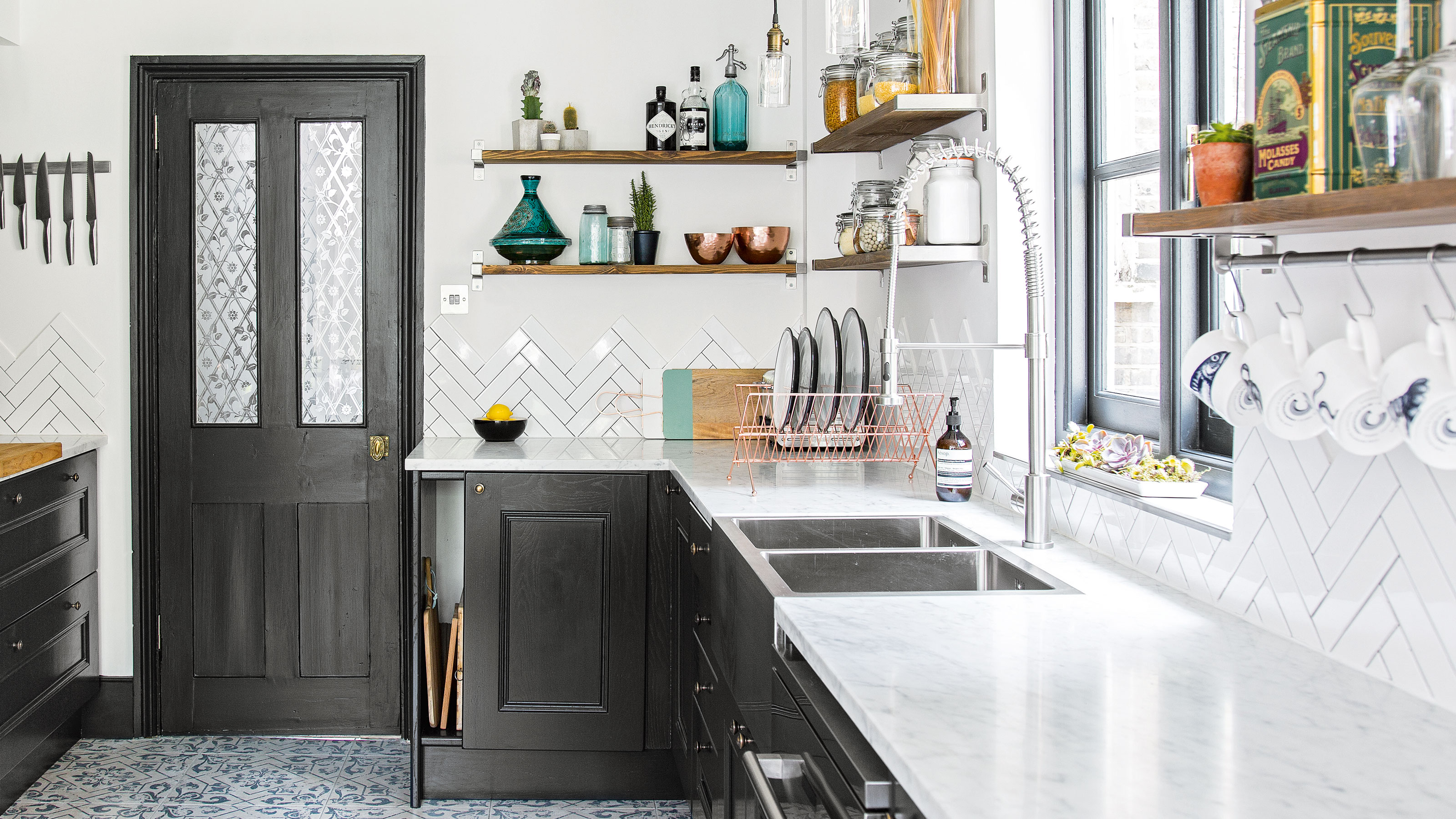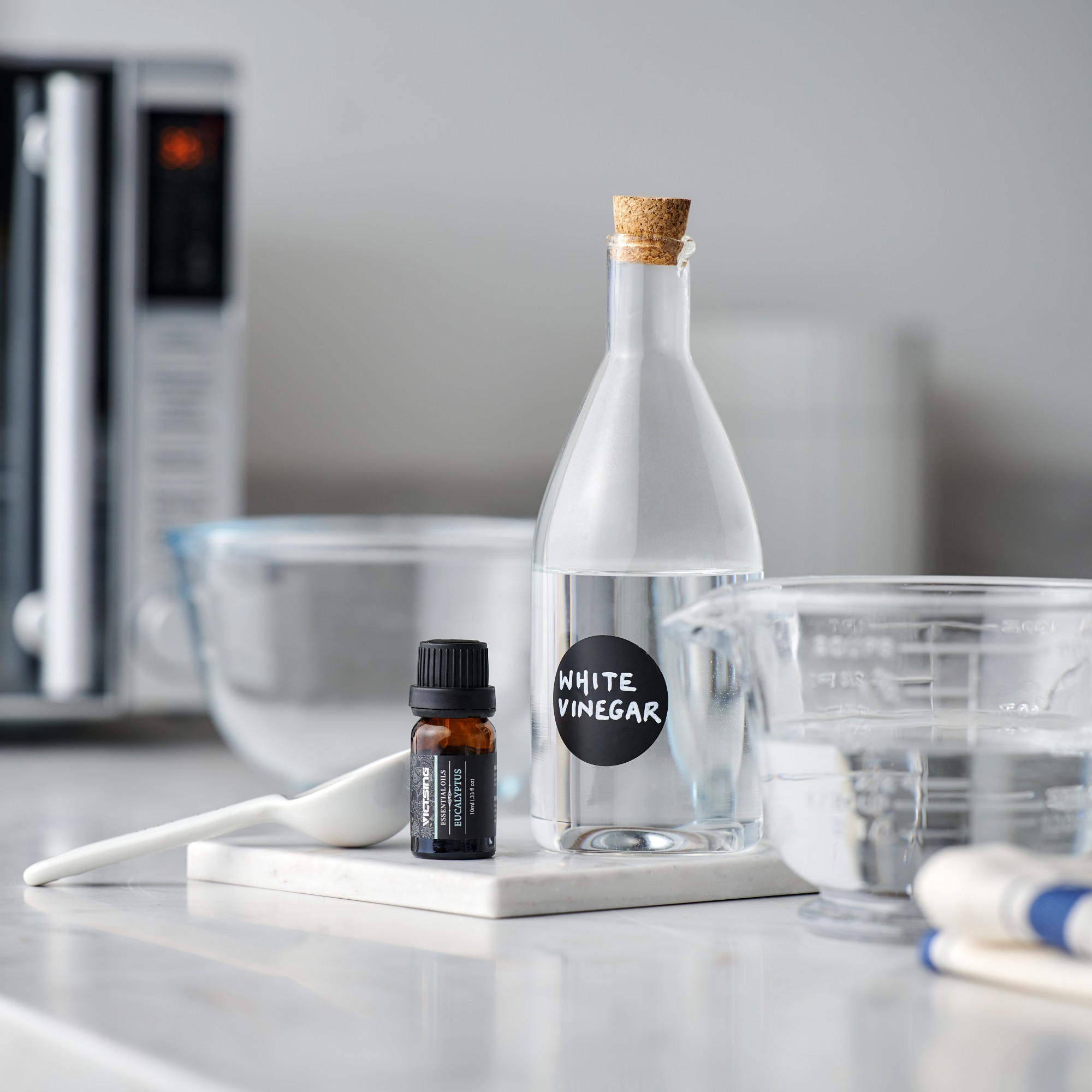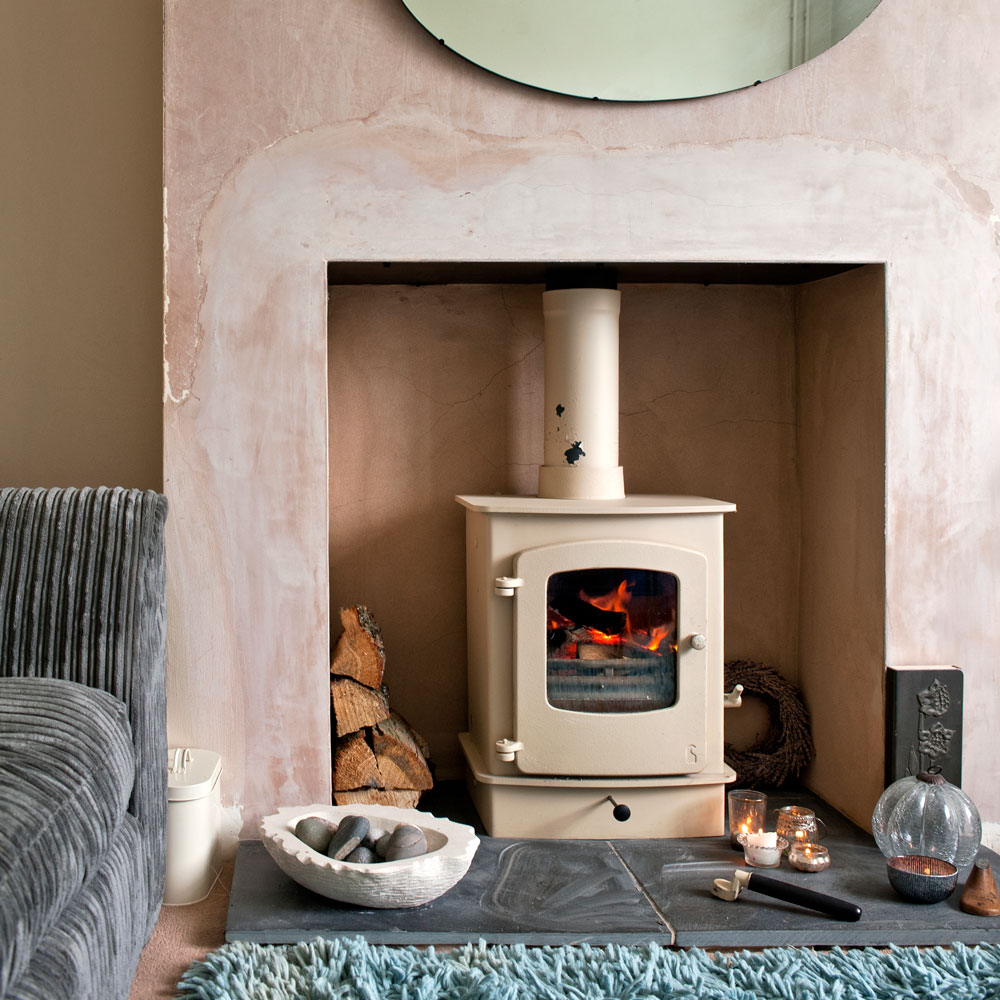How to clean a stainless steel sink – remove stains and make it sparkle without using harsh chemicals
Is there anything more satisfying than a clean and shiny sink?


Want to know how to clean a stainless steel sink? Well, you’ve come to the right place. Keeping your sink shiny and clean can feel like an impossible task, but it’s easier than you’d think.
Yes, no matter if a stainless steel sink is number one on your list of kitchen sink ideas or if you already have a stainless steel sink that needs some serious TLC, keeping it clean is incredibly important. After all, they’re quick to tarnish and easy to scratch - not to mention the fact that they’re beaten by dirt, food debris, and hard water on a daily basis.
But don’t worry; you don’t have to whip out harsh chemicals to clean a stainless steel sink. Just as you can clean stainless steel pots and pans without having to inhale nasty fumes, you can also clean a stainless sink the natural way.
How to clean a stainless steel sink naturally
'Household stainless steel sinks are notoriously challenging to clean; they are susceptible to water spots, mineral deposits and stubborn stains. So, it’s crucial that you have a thorough cleaning routine, and it’s best if you’re able to use what you already have in the cupboard,' says Rachael Kiss from Alliance Online.
In fact, by using natural alternatives, you can save yourself some money while simultaneously avoiding any nasty fumes.
1. Use lemon and baking soda

For cutting through grease and grime, Laura Harnett from green cleaning retailer Seep says an acid like lemon juice will work best. You can cut a lemon in half, sprinkle on baking soda and scrub to clean, leaving the sink smelling fresh using natural products.
You don’t even need to use a cloth for this stainless steel sink cleaning hack, either, as you can actually use the lemon as the makeshift cloth. In fact, this combination is perfect for the sensitive nature of stainless steel.
Sign up to our newsletter for style inspiration, real homes, project and garden advice and shopping know-how
While the lemon and baking soda react to create an effective cleaning product that will break down any loose debris or stains, the light abrasive nature of the baking soda will also give your stainless steel sink a deep clean without scratching the surface.
2. Use vinegar

White vinegar is quickly become one of our favourite cleaning products at Ideal Home. Not only can it clean a shower screen, but it can also remove limescale from a kettle. And you’ll be happy to know that it can work wonders on a stainless steel sink, too.
‘White vinegar is acidic, which makes it effective in dissolving mineral deposits and hard water stains. It also acts as a natural disinfectant, killing germs and bacteria,’ explains Ava Wilson from Unclutterer.
To successfully clean a stainless steel sink with baking soda and vinegar, Ava suggests using a spray bottle filled with vinegar. Then, you can spray it onto the stainless steel sink, focusing mainly on the toughest areas of grime or the most stubborn hard water deposits.
If you leave the vinegar on the sink for around 10-15 minutes, the vinegar should do all of the hard work for you, but you’ll want to give the sink a final scrub, rinse, and buff when this is done.
In fact, our Ideal Home writer Jullia Joson, found that using a mixture of vinegar and baking soda was the best way to clean her stainless steel sink when she tried it herself.
3. Use cream of tartar
You’ll normally find the cream of tartar down the baking aisle, but what you might not realise is that cream of tartar can actually make a very effective stainless steel cleaner.
That’s because cream of tartar is mildly acidic, which means that it can eat away at the hard water spots or discolouration that are often extremely common in stainless steel sinks. But what do you do with it?
‘Make a paste by mixing equal parts of cream of tartar and water,' advises Ava. 'Apply this paste to any stains or discoloured areas on the sink. Let it sit for 5-10 minutes. Using a soft sponge, scrub the areas gently. Rinse the sink with water and dry with a cloth.
4. Use ash

For stubborn dirt stuck onto stainless steel, Laura says you can actually use leftover ash from your fireplace or woodburning stove to form a paste (or lye) to remove it. 'Believe it or not, the combination of ash and water is a natural disinfectant and is perfect for soaking stainless steel in to remove dirt and pathogens as well as naturally polishing your stainless steel,' Laura explains.
When you’re done, you can even use the ash as a natural fertiliser in your garden. If you don’t have a fireplace or any ash, then you can buff with natural oils, Laura says she finds olive oil works best.
5. Use toothpaste

If you don’t have time to head to the supermarket and need to clean your stainless steel sink with something you already have in the house, it might be a good idea to head into your bathroom and grab your toothpaste.
Yes, toothpaste is a great tool for cleaning a stainless steel sink, thanks to the mildly abrasive nature of the product. Just make sure you don’t use too much at a time.
‘Apply a small amount of non-gel white toothpaste to a toothbrush or soft cloth. Gently scrub any stains or discoloured areas. Rinse thoroughly with water and dry with a clean cloth,’ says Ava. However, she does offer a warning to those looking to use this method.
‘Always remember to test any cleaning method on a small, inconspicuous area of the sink first to ensure it doesn’t cause any damage or discolouration.’
How to maintain a clean stainless steel sink
Cleaning a stainless steel sink is a little different to knowing how to clean a granite sink, or other materials. Cleaning experts at Ecozone explain that the main culprits of dull sinks are limescale build-up and watermarks.
Not only do they make your sink look grubby, but they also make stain-inducing substances (tea, coffee, grease, and spices like turmeric) cling to the sink's surfaces. That’s why it’s always a good idea to give your sink a daily wipe-down to maintain a clean stainless steel sink. This is how to do that.

1. Remove all bits of food
Research has shown our kitchen sinks can often contain more germs than our toilets, and according to cleaning service Blanco, any stainless steel surface is best cleaned immediately after use to prevent limescale. So, first, remove dishes and any bits of food from the plughole, as leaving food to fester may attract fruit flies, the last thing you want buzzing around your lovely kitchen island sink ideas.
2. Wipe with the soft side of your sponge
Squeeze some washing up liquid onto the soft side of a damp sponge, and clean the entire sink, draining board, plughole and taps. A Dishmatic makes life easier and helps with awkward spots, but make sure you use a non scratch refill sponge, at Amazon rather than the standard green one. You could also try a Scrub Mommy (available at Amazon), which is favoured by Mrs Hinch and has a soft side to avoid scratches.
'Stainless steel actually has a grain (similar to wood) and needs to be wiped in a linear motion to get it looking its best,' says Laura Marsden from Marigold.

3. Rinse with warm water
After wiping the sink down in the direction of the grain (if you can see it), rinse it thoroughly with warm water. Get rid of as many suds as possible and dry with a cloth.
4. Buff the surfaces
For a streak-free finish, get the stainless steel sink completely dry with an extra absorbent microfibre cloth, like a Marigold Squeaky Clean Microfibre cloth. We recommend finishing things off by spraying a glass cleaner onto the steel and wiping it with a thin tea towel or J cloth to help it shine.
In fact, Ava from Unclutterer even suggests using baby oil on a clean sink to give your stainless steel sink the shine you’re after. ‘Baby oil has a light consistency and can provide a protective layer on the stainless steel, preventing water spots and fingerprints,’ she says. ‘It also gives the sink a polished, shiny appearance.’
To do this, simply apply a few drops of baby oil to a soft cloth and rub it in the direction of the grain.
Mistakes to avoid when cleaning a stainless steel sink
Cleanfluencer Rebecca, @home_at_number_15 warns against using steel wool pads on stainless steel. 'Scrubbing away can leave iron particles behind, which causes rust and corrosion,' she says.
Don't use anything abrasive as it could leave permanent scratches, ruining your stainless steel sink over time. Avoid using bleach as this can discolour stainless steel.
How to remove odours from a sink
Jennifer Sharpe from Fabulosa suggests using a sink and drain freshener every now and then to get rid of odours. Fabulosa's Foamo will sanitise your drains, killing 99.9% of bacteria. Alternatively, you can use a capful of an concentrated disinfectant such as Zoflora.

What is the best thing to clean a stainless steel sink with?
You can clean stainless steel with everything from baking soda and lemon to toothpaste, and these options will all offer similar results. In fact, anything that is slightly acidic and abrasive should do the trick, so it’s always a good idea to work with what you have in the pantry before heading out to buy any new cleaning products.
Ultimately, what you need to use will depend on the state of your stainless steel sink. If it’s a new sink that’s barely been used, you should be able to get away with cleaning it every day with just dish soap and water. But if your stainless steel sink is older and needs some serious TLC, it’s best to opt for a deeper clean using acidic products such as vinegar, lemon, or cream of tartar.
How can I make my stainless steel sink look new again?
First, you need to give your stainless steel a good clean. Hard water deposits and discolouration will both affect the shine of your stainless steel sink, so you should always give it a good clean using natural ingredients such as lemon and baking soda or toothpaste.
When you’re confident that your sink is as clean as possible, you can then get to work on bringing the shine back. You can do this by buffing it with oils such as baby oil or olive oil, and this will also work to protect the stainless steel in the future.

Millie Hurst was Senior Content Editor at Ideal Home from 2020-2022, and is now Section Editor at Homes & Gardens. Before stepping into the world of interiors, she worked as a Senior SEO Editor for News UK in both London and New York. You can usually find her looking up trending terms and finding real-life budget makeovers our readers love. Millie came up with the website's daily dupes article which gives readers ways to curate a stylish home for less.